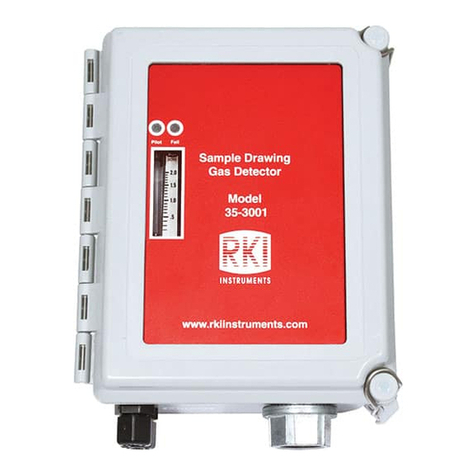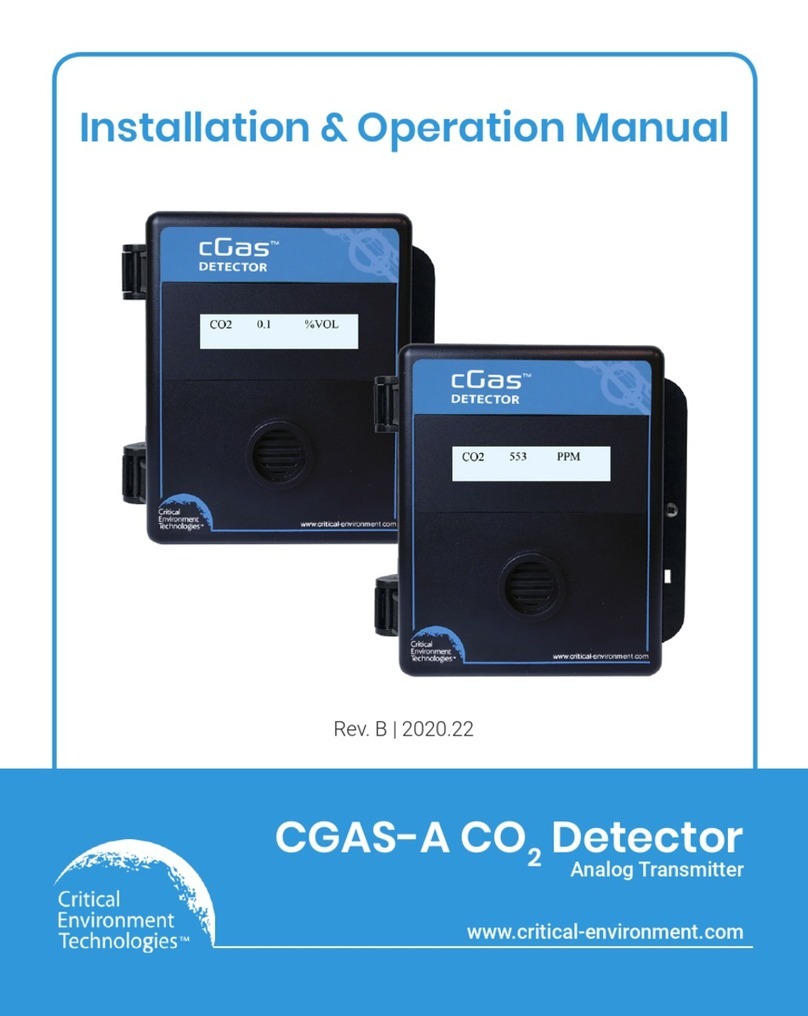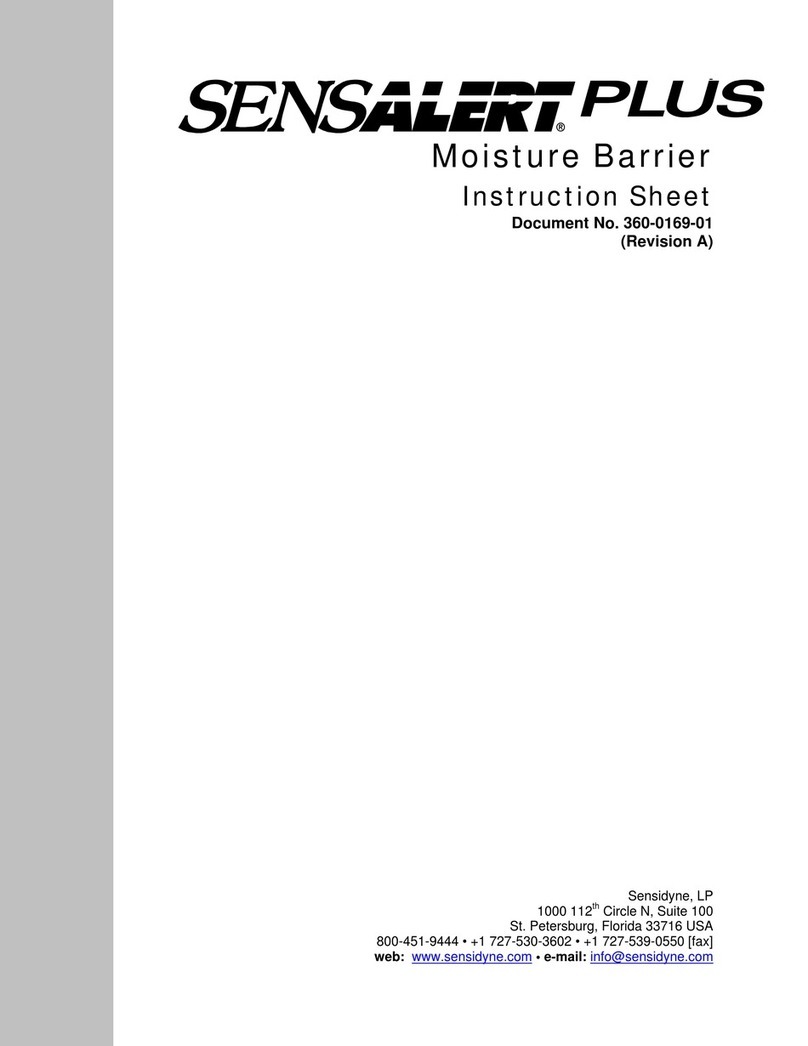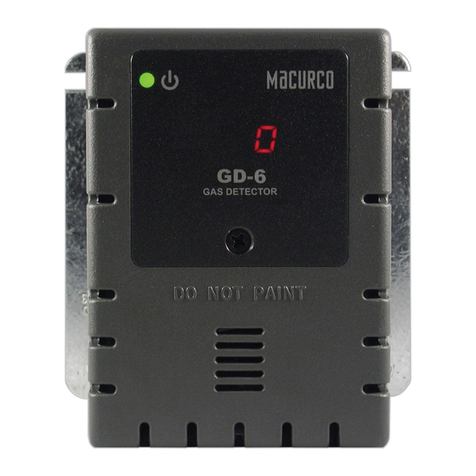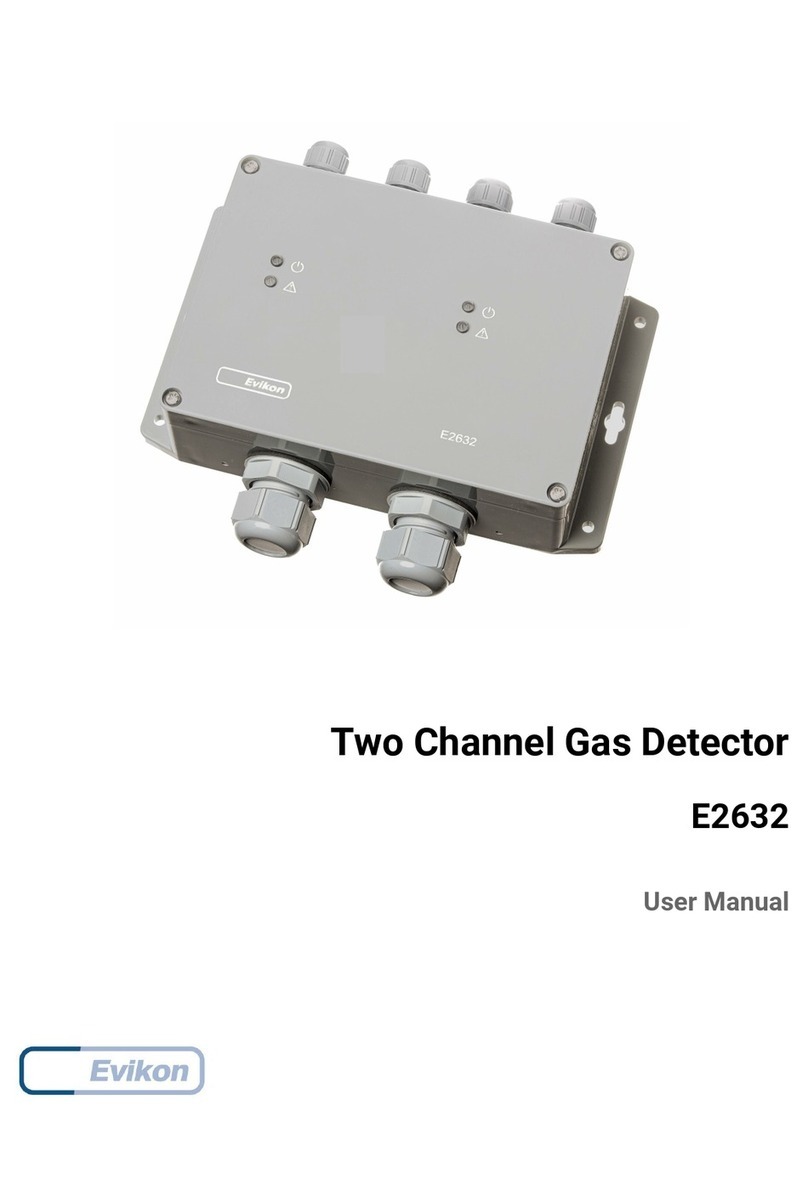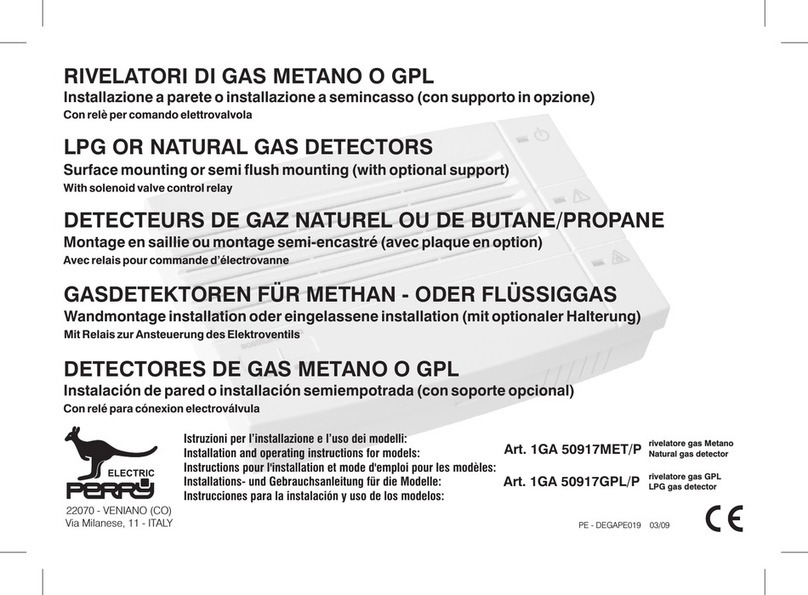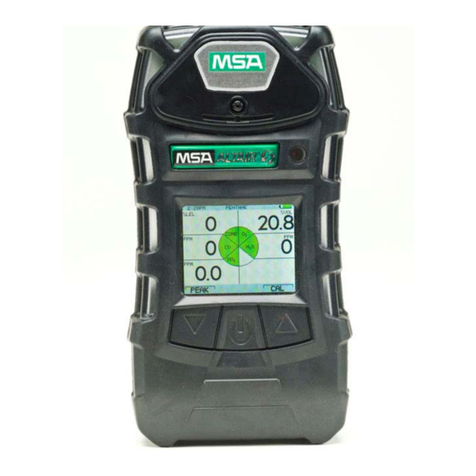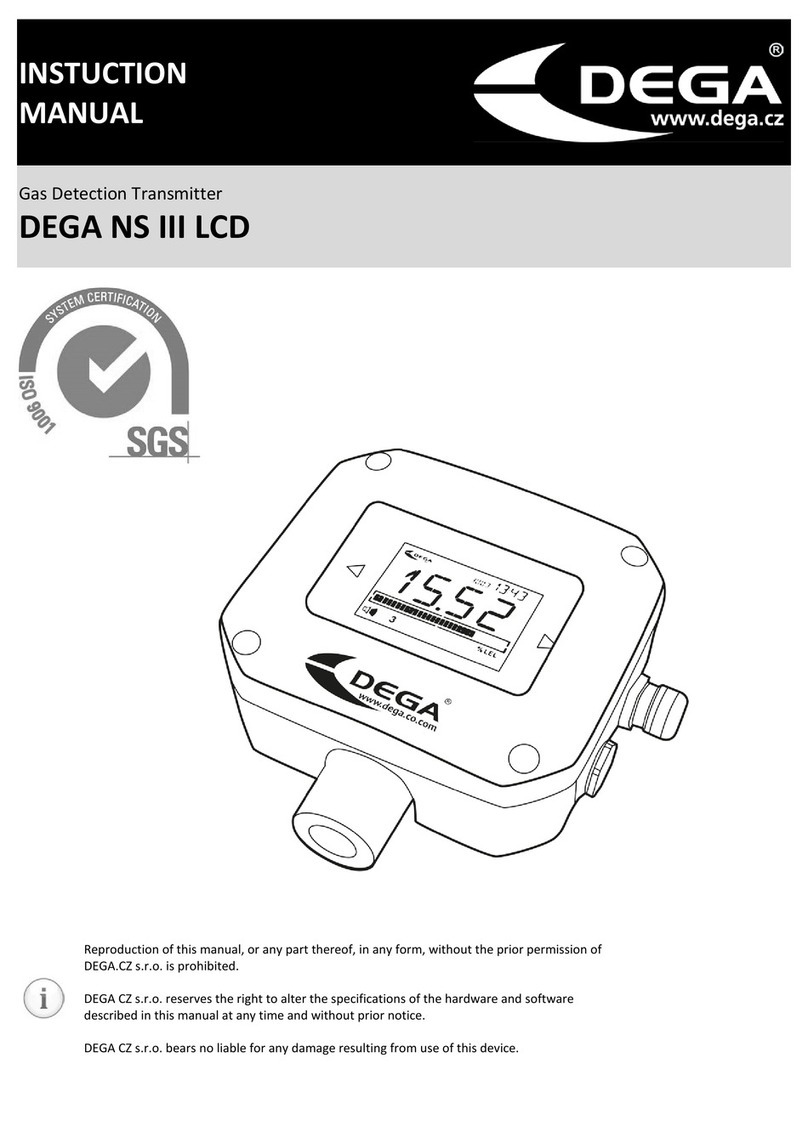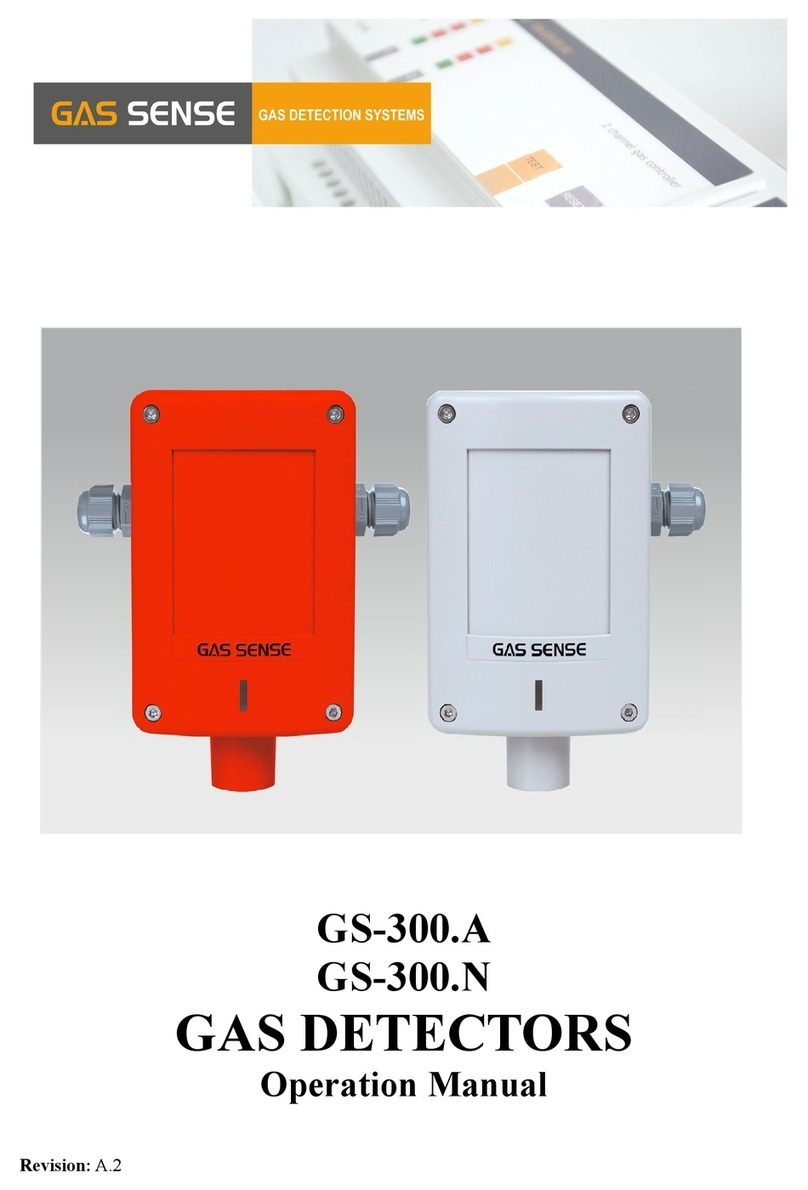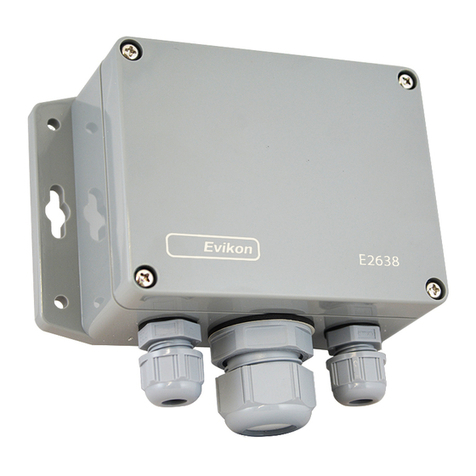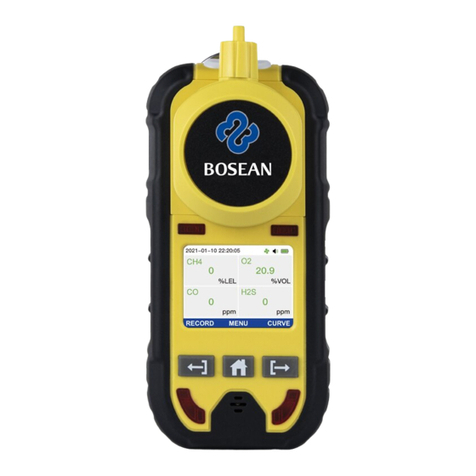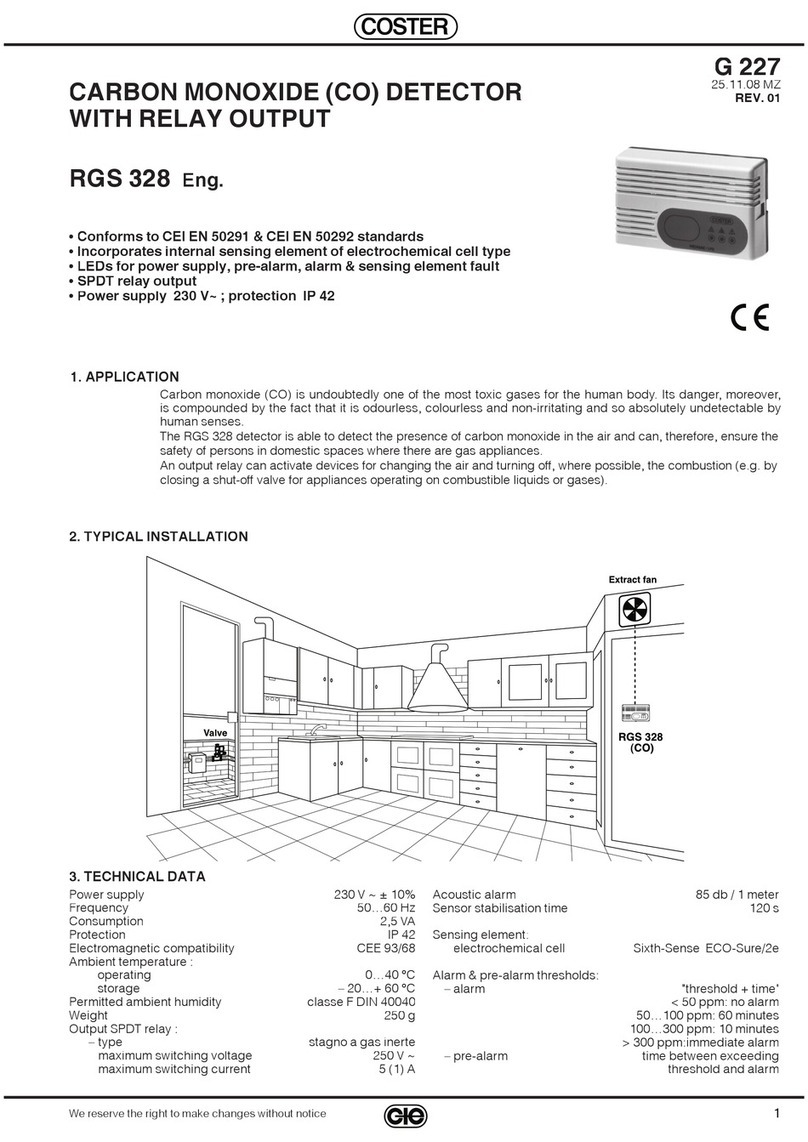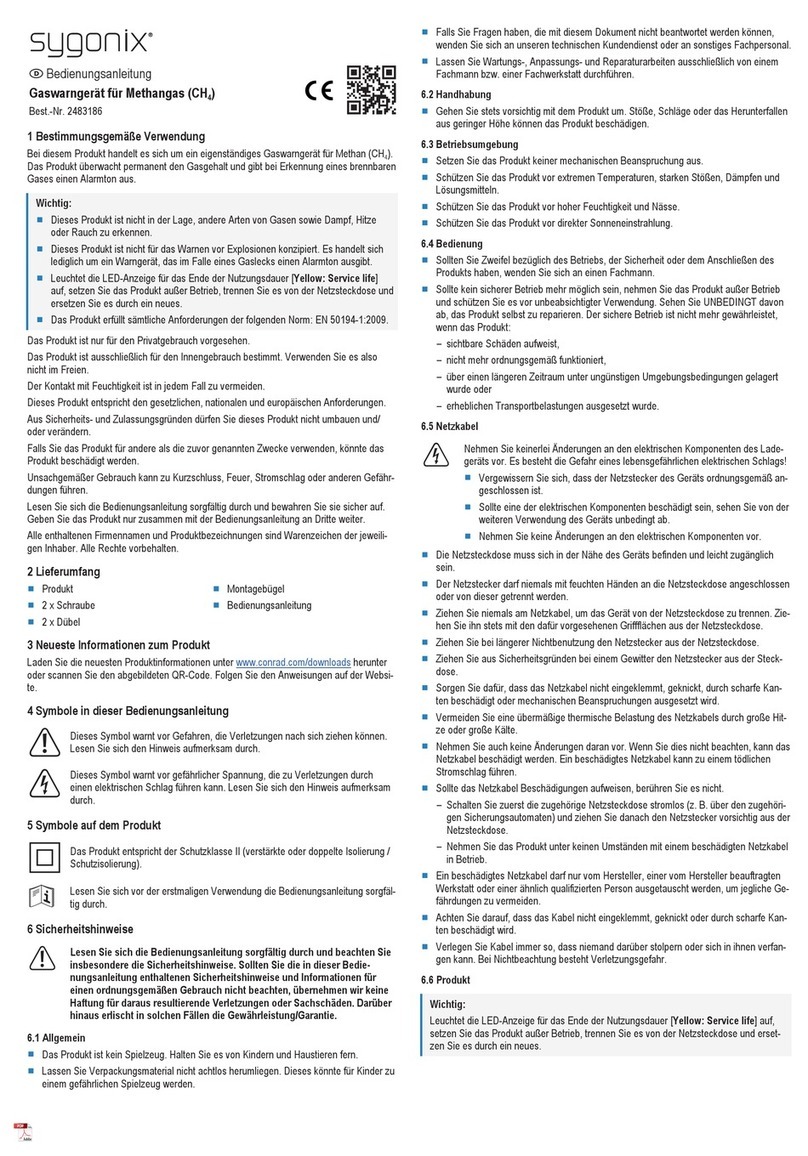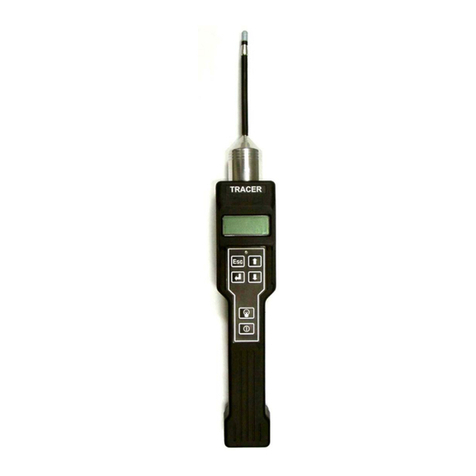
The
1306
is
provided with an input
filter which protects it from transient
voltage surges on the power supply
caused,
for
example,
by
lightning strikes.
The
1306
resumes its automatic opera-
tion as soon as the voltage supplied to it
falls within operational limits.
Maintenance
Regular maintenance
of
the
1306 in-
volves calibration
and
change of
the
All terms relating
to
gas analysis are in
ac-
cordance with the
definitions
set
out
in the
ISO Draft International Standard 8158
Details about the
optical
filters which are
available
for
use with the 1306 can be found
in the "Optical Fil
ters"
Product Data Sheet.
An optical
filter
UA XXXX is installed in the
1306, which is then
zero-point
calibrated be-
fore delivery. Calibration with a
specific
gas
is optional. A "calibration
chart
" gives details
about the installed
optical
filter
and the
ca
li-
brat
ion
of
the 1306.
MEASUREMENT TECHNIQUE:
Photoacoustic
infra-
red
detection
RESPONSE TIME:
45s -55s (time taken
to
purge the cell, and
measure the gas concentration in the new air
sample).
ACCURACY:
Zero
Drift:
Typically = Detection Threshold per 3 months•
Influence
of
temperature
•:
insignificant-
compensated
for
internally.
Influence
of
pressure.&: ± 1,
5%
of
detection
threshold/mbar
A gas concentration equal
to
1%
of
the
maxi-
mum measurable concentration was used in
determining the following specifications
Repeatability:
1%
of
measured valuee
Range
Drift:
± 2,5%
of
measured value per 3
months•
Influence
of
temperature• : insignifi
cant-
compensated
for
internally.
Influence
of
pressure.&: - 0,01%
of
measured
value/mbar
MEASUREMENT
RANGE:•
Detection
Threshold:
is gas-dependent but
ranges
from
parts/million
(ppm)
to
parts/bil-
lion (see Table
for
examples
of
the
detection
threshold
of
some pure gases/vapours).
Dynamic
Range:
four
orders
of
magnitude
(that is, the upper detection
limit=
10000
times the
lower
detection limit)
GENERAL:
Cabinet:
complies with IEC
529
&
IP
53
Stan-
fine air-filter.
The
frequency with
which these two operations need
to
be
performed is dependent on
the
1306's
measurement frequency,
and
on
the
amount
of suspended
matter
(e.g.
dust) in
the
air
it
is monitoring.
The
status
report
informs
the
user of when
the
1306's fine air-filter
needs to be changed.
It
is often practi-
cal to calibrate
the
1306 when its fine
air-filter is changed (typically 4 times
a year). Calibration in
the
field
(in
Specifications 1306
Gas/Vapour Detection Threshold
(ppm)
Phosgene 0,03
Vinyl chloride 0,2
Ammonia 0,3
Styrene 0,2
Perchloroethylene 0,
05
Ethylene oxide 0,1
Benzene 0,8
Total hydrocarbons
0,1
(with
ref
.
to
propane)
T0
1
814GBO
dards. Resistant
to
rain falling at a maximum
angle of
60
°
to
the vertical axis. Dust resistant
Dimensions:
Height: 400 mm (15,7 in)
Width: 200 mm (7,9 in)
Depth: 102 mm (4,0 in)
Weight:
5,5 kg
(12,1
lbs)
Operating
Temperature:
-20°C
to
+50
°C
Relative
Humidity:
95%-100% relative hu-
midity
at
soo
C
Power
Requirement:
Power Supply ZG 0309 complies with IEC348
Class 1 Standards. It converts: 90, 100,110,
120,130,200,210,220, 230, 240 VAC ± 10%,
50/60Hz
to
12 V DC. Power consumption:
-SOVA
. Alternatively, a DC
power
supply
(e.g. a car battery) providing 12 V
(+15%/
-20%)
to
the input terminals
of
the 1306 can
be used. The 1306 is supplied with an
at
-
tached 4m power cable.
Power
Consumption:
During measurements:
34
W peak (start)
and
18
W
operating.
On
standby: 2W (power-down
mode)
Vibration
Sensitivity:
Strong
vibrations
occuring
at
a frequency
of
20 Hz can
compro-
mise the detection-threshold
specificat
ion.
Acoustic
Sensitivity:
Not
influenced by
ex-
ternal sound
situ)
is performed using a known con-
centration
of
either
the
gas to be mon-
itored, or a
substitute
gas.
If
the
1306
stops taking gas measure-
ments the user can request detailed re-
sults of all the 1306's self-tests. Using
this data, service engineers can quickly
diagnose any fault and perform neces-
sary repairs without
delay.
This means
that
service costs can be minimised and
that
the
1306
is
out of operation for the
shortest possible time.
Electromagnetic
Compatibility:
Comp
lies
with U.S. FCC requirements
for
class B
computing devices.
Electromagnetic
Pulse (EMP)
Protection:
In
accordance with CCITT recommendation
K17.
COMMUNICATION:
The 1306's digital interface complies with
the
EIA Recommended Standard
RS
485. The
Digital Data Communication Message
Proto-
col (DDCMP) is used
to
ensure
error-free
and
synchronized data transfer. The 1306 is sup-
plied with an attached 4m communication
ca-
ble. The Application Diskette BZ5003
provid-
ed allows users to control a single 1306. B& K
Application
Software Type 7619 is available
which allows users
to
control
up
to
31
Toxic-
gas
Monitors
in a network.
ACCESSORIES INCLUDED:
Application Diskettes .
....
..
.
..
...
..
............ BZ 5003
Power Supply ........
...
..
..
....
.......
..
.....
...
.
....
ZG 0309
Spare Fine
Air-f
ilter Thumbscrew
Unit,"
0"
-r
ing & Retaining Disc
...
..
..
.
..
.UA 0994
Fine
Air-filters
(10) .
..
..
..
.......
....
.....
...
.
..
.
..
OS
0714
Coarse
Air-filter
Unit (2) .
...
..
.............
..
.UC 0193
Calibration Kit consisting
of
:
Teflon Tubing (4m)..................
......
.......
..
.
AT
2177
Calibration Stub.
..
.........
..
...
...
....
..
.........
..
DB
3023
"Y"-piece
.....
....
...........
...
....
..
.·.................
..
UD
5001
"0"-ring
(4) .
..
........
..
.....
..
...
...
....
..
........
.
....
.
YJ
0770
Threaded Nut...
..
.
....
....
..
..
...
..
...............
...
.
YM
0652
Spare Fuses:
2 x 125
mA
.
...
..
..
............
...
..
...
.........
....
.
...
..
VF
0030
2 X 2,0 A.............................
..
....
.....
....
...
..
..
VF
0010
2 X 4,0 A.........
...
..............
......
..
.......
...
.
....
..
VF
0045
Allen Key
to
open/close
the 1306....
..
QA
0161
Special Key
to
install
optical
fil
ter
...
..
QA
01
62
"
C"
spanner (wrench) ...................
..
......
QA
01
81
Tweezers .....................
..
...............
..
....
..
...
QA
0164
ACCESSORIES AVAILABLE:
Optical Filters (22)...........
..
....
.UA0968-UA0988
....
.....
....
...
..
....
.
..
....
............
..
..
..
..
...
..
..
..and UA0936
RS
232C-RS 485 Converter................WQ 0677
Communication Cable with
2 x 25pin connectors......
....
....
...........
...
WL 0814
Communication Cable with a 25-
pin and a 9-pin connector.
....
..
.
..
....
..
.. WL 0815
REFERENCE CONDITIONS:
• Measured
at
20
°C, 1013 mbar, and relative
humidity (RH): 60%.
• Measured
at
1013 mbar, and
RH
: 60%.
.&
Measured
at
20°C
and
RH
: 60%.
For information on the installation
of
the Toxic-gas
Monitor
contact
your local Bruel & Kja3r representative.
